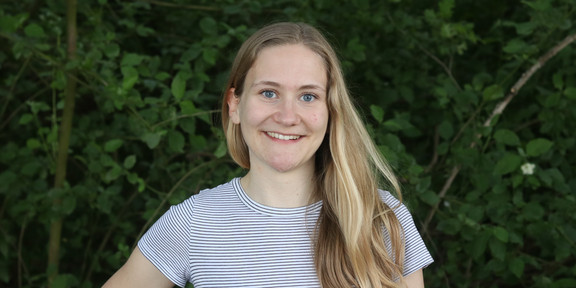Master's graduate Pauline Scheunert wins the KoMet Young Researchers Award

The Spatial Modelling Lab congratulates Master's graduate Pauline Scheunert on the award of the KoMet Young Researchers Award for her Master's thesis by the Competence Field Metropolitan Research of the University Alliance Ruhr! The thesis entitled "Constructing an index to assess small-scale potential for physical activity of urban environments" was supervised by the Spatial Modelling Lab (Jun.-Prof. René Westerholt) and the Urban and Regional Planning research group (Prof. Frank Othengrafen). The prize will be awarded in December at the KoMet Day 2023 in Essen.
The work deals with the evaluation of small-scale potentials for movement in the urban environment. This is set against the background that the prevailing and advancing prevalence of physical inactivity poses a significant risk to individual as well as public health. Insufficient physical activity promotes a number of health risk factors for non-communicable diseases. In contrast, a sufficient amount of physical activity can have a protective effect and reduce the health risk of many common diseases, such as cardiovascular diseases or type 2 diabetes. The level of physical activity depends, among other factors, on the urban environment, which can either encourage or discourage more physical activity. Many urban structures are still heavily tailored to car traffic, which has been shown to discourage physical activity. However, this situation is also seen as a promising opportunity to promote physical activity at a societal level and thus improve the health and well-being of the population. Such a relationship-based approach to health promotion requires the identification of potentials and barriers for physical activity in urban space. So far, however, health promotion has played a rather subordinate role in spatial planning and instruments to consider potentials for physical activity in planning are hardly available. This is where the Master's thesis comes in, and pursues the goal of investigating the possibilities and construction of an index for measuring small-scale physical activity potentials in the urban environment.
The index is implemented at the level of residential areas and comprises four dimensions that influence different forms of physical activity. The transport network and land use patterns are key dimensions determining the likelihood of active mobility. As walking and cycling for mobility purposes are crucial opportunities to integrate more physical activity into everyday life, considering the factors that promote or prevent active mobility is of great importance. In addition, existing and high-quality green and blue structures offer potential for physical recreation as well as sport and play opportunities. Another dimension that contributes to physical activity is the presence of appropriate sports and play facilities in the neighbourhood. The four dimensions are measured in 22 variables. For their calculation, an active neighbourhood concept is applied that covers a total of five kilometres around the individual residential areas. Four isochrones with decreasing weights are created and thus the accessibility factor is integrated into the index. Accessibility plays an important role, as it determines the actual use of the potential for movement.
The index is tested in three inner-city districts of Dortmund and thus provides insights into the urban movement potentials for 742 residential areas. The greatest potentials for residential areas are found in the Klinikviertel and Kreuzviertel neighbourhoods, whereas areas in Tremonia, Borsigplatz, Körne, and the northern Gartenstadt show impediments to physical activity. These results indicate that the density of a neighbourhood is not necessarily decisive for its movement potential. Residential areas in low-density neighbourhoods show low potentials for active forms of mobility, whereas areas of higher density show barriers to movement due to greater traffic load as well as lower green space provision. Furthermore, the index results highlight that the location of settlement areas in the urban fabric is relevant for their mobility potential. Thus, many settlement areas with below-average index results are characterised by an isolated location in the inner city. This results, on the one hand, in poor conditions for active mobility and, on the other hand, in low accessibility to green spaces and sports and play facilities. Overall, the results of the index confirm that it is suitable for assessing small-scale physical activity potential in the urban environment. In order to enable a valid interpretation of the results, it turns out that the index should be based on a well-founded theoretical framework. Furthermore, the interpretation of the index results should be supported by the results in the individual dimensions as well as the underlying variables.
The construction process of the index also highlights the lack of suitable data at the small-scale level. This implies the need to carefully check and record the quality of existing data, which is often only possible with appropriate local knowledge of the study area. Since the creation of the index involves a number of methodological decisions, it is important to analyse the robustness of the results. The developed index turns out to be largely robust to an adjustment of the weights, whereas changes in the definition of the neighbourhood lead to larger deviations in the index results. This underlines the importance for small-scale research to define a neighbourhood concept that is theoretically linked to the research interest. Besides the ability of the index to identify small-scale potentials for movement and to understand the underlying urban factors, the Master's thesis opens up the question whether small-scale indices can be used in planning to evaluate different planning scenarios. Modelling and comparing the health impacts of different planning scenarios can lead to decisions in favour of health-promoting urban structures and to more attention being paid to health promotion issues in spatial planning. To what extent small-scale indices are suitable for such an approach remains to be shown by further research.

